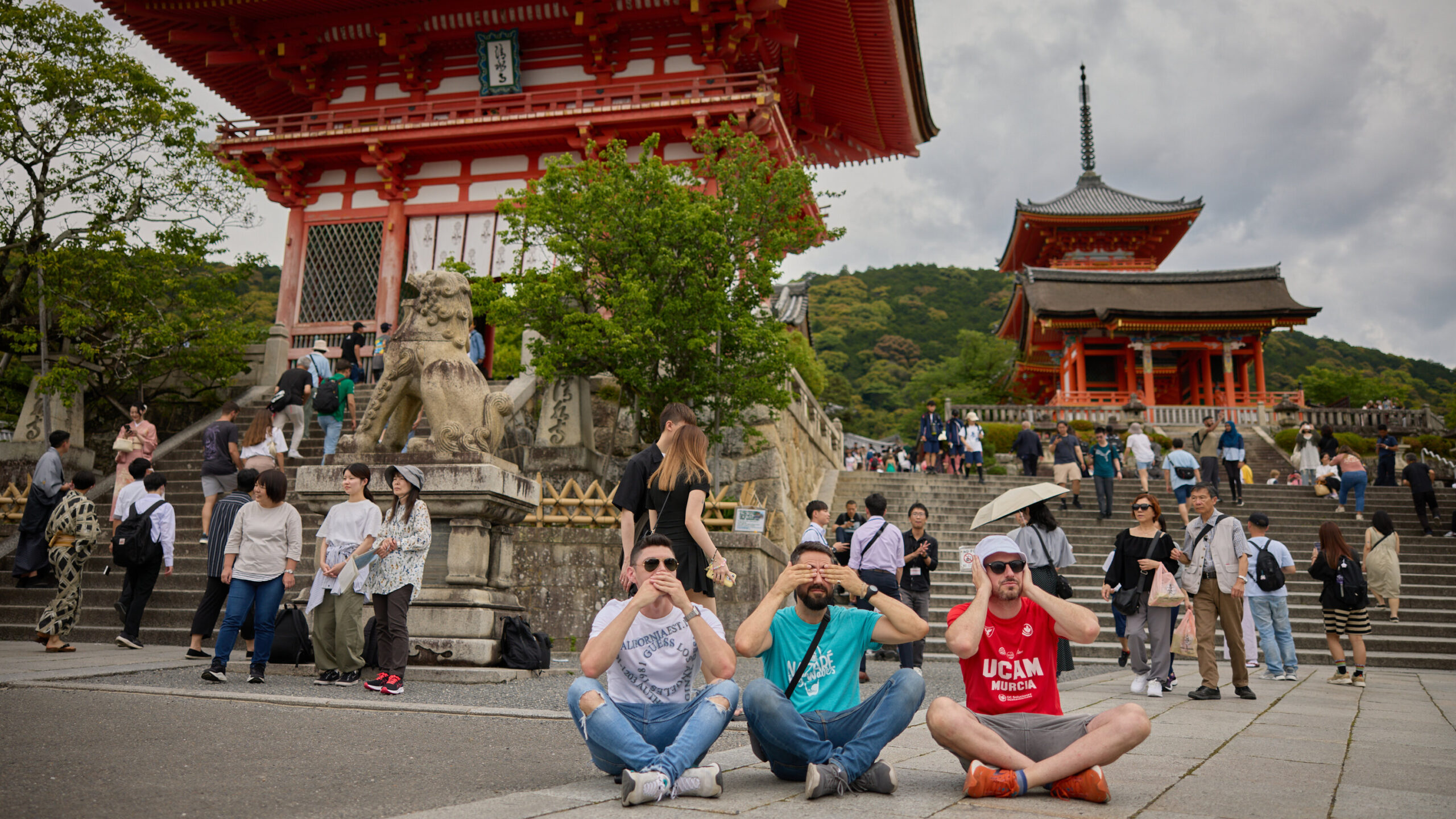We all know the dazzling icons: the neon blaze of Shinjuku, the serene perfection of Kyoto’s temples, and the hypnotic precision of the Shinkansen. But Japan, like a meticulously folded origami crane, holds countless intricate layers hidden within its creases. Beyond the well-trodden paths and the curated tourist experiences lies a quieter, stranger, and utterly captivating reality. Let’s peel back a few layers and listen to the whispers of this hidden Japan:
The Vending Machine That Sells… Everything (Except the Expected): Yes, hot coffee cans are ubiquitous. But how about a vending machine offering fresh eggs laid that morning? Or bags of rice? Or even bananas? Venture into rural areas or specific neighborhoods, and you’ll find machines dispensing potatoes, umbrellas, toilet paper, and sometimes, bafflingly, live beetles (a popular pet!). It’s a testament to Japanese convenience and trust, operating on an honor system that feels almost alien elsewhere.

The Day Debt Collectors Go Silent: Ōmisoka’s Sacred Truce: Imagine New Year’s Eve, but with a profound cultural twist. On Ōmisoka (December 31st), an unwritten but deeply respected rule takes hold: debt collectors cease all activities. Chasing debts on this day, dedicated to settling accounts (both financial and spiritual) and preparing for renewal, is considered incredibly rude and inauspicious. It’s a nationwide pause button on financial strife, a breath of collective relief.
Your Train Ticket as a Tiny Masterpiece: Ekiben Artistry: Forget soggy sandwiches. Japanese train station lunchboxes, ekiben, are culinary art forms specific to each region. The packaging isn’t just functional; it’s often stunning, intricate lacquer boxes resembling temples, bamboo baskets, or decorated with local flora and fauna. Inside, a meticulously arranged mosaic of local delicacies tells the story of the landscape rushing past your window. Eating becomes a journey within the journey.
The Forest of Silent Screams: Aokigahara’s Complex Reality: While often sensationalized in media, Aokigahara Jukai (“Sea of Trees”) at the base of Mt. Fuji holds a deeper, more somber truth. Beyond its natural beauty lies a place intertwined with complex cultural attitudes towards life, death, and nature. It’s a reminder of societal pressures often hidden beneath Japan’s orderly surface, a place where ancient folklore about spirits mingles tragically with modern struggles. Visiting requires profound respect, not morbid curiosity.
Where Foxes are CEOs: The Shrine Run by a Canine Corporation: At the Fushimi Inari Shrine in Kyoto, famed for its thousands of vermilion torii gates, the primary deity is Inari, the god of rice, fertility, and worldly success. Inari’s messengers? Foxes (kitsune). So revered are they that the shrine’s overseeing body is legally registered as a corporation named “Inari”—essentially run under the auspices of the fox deity. Business and spirituality intertwine in the most literal sense.
The Town Where Phones Go Dark: “Digi-Detox” Enforced by Nature: Step into Nagano Prefecture’s charming Shimanto Town in Kochi (or parts of Wakayama), and your smartphone might suddenly become a very expensive paperweight. Deliberately. These areas are designated “Smartphone Dead Zones” due to poor coverage, but as a conscious effort to preserve the natural soundscape (especially crucial for rare bird species) and encourage visitors to truly disconnect and immerse themselves in the untouched environment. It’s a radical embrace of silence.

Bowing to the Unseen: Shrines Guarding the Mundane: Walk through Tokyo and look closer. Tucked beside a gleaming skyscraper, nestled near a train track, or even perched atop an office building, you might find tiny, impeccably maintained Shinto shrines. These could be venerating the spirit (kami) of the land the building occupies, a nearby ancient tree, or even the spirit of the train line itself. It’s a constant, quiet acknowledgment of the spiritual within the hyper-modern.
The Prison Inside a Volcano: Aogashima’s Island Paradox: Imagine a village thriving inside the crater of an active volcano. Welcome to Aogashima Island, 200 miles south of Tokyo. This tiny, remote community lives entirely within the caldera of a volcano that last erupted in the 1780s. It was once used as a natural prison during the Edo period. Today, a few hundred residents who farm, fish, and soak in natural hot springs are surrounded by sheer volcanic cliffs, a community living defiantly within the belly of the earth.
More Pets Than Children: A Demographic Whisper: It’s a startling statistic that speaks volumes about societal shifts: Japan has more registered pets than children under the age of 16. While the declining birthrate is well-known, the sheer scale of pet ownership (especially dogs and cats, pampered with luxury goods and services) highlights changing family structures, companionship needs, and the deep cultural affection for animals, often seen as family members (kazoku).
The Art of Broken Beauty: Kintsugi Philosophy: When a cherished ceramic bowl breaks, the Western instinct might be to discard it or seek invisible repair. Japanese kintsugi takes the opposite path. It repairs breaks with lacquer mixed with gold, silver, or platinum, highlighting the cracks as part of the object’s history. It’s more than craft; it’s a profound philosophy: embracing flaws, honoring history, and finding beauty in imperfection and resilience. The breakage becomes part of its story, not its end.
Whale Cults and Mountain Monks: The Persistence of Animism: Beneath the surface of Buddhism and Shinto lies an even older layer: animism. The belief that spirits (kami or yōkai) inhabit natural phenomena—mountains, rivers, rocks, trees, even tools—persists remarkably. From the ascetic Yamabushi mountain monks who commune with these spirits to local festivals venerating specific rocks or waterfalls, Japan maintains a deep, often unspoken, connection to the sentience of the natural world.
The Rabbit Island Enigma: Ōkunoshima’s Cute Contradiction: Ōkunoshima, a small island in the Seto Inland Sea, is overrun by hundreds of friendly, wild rabbits. It’s adorable, yes. But the history is dark: it was a top-secret chemical weapons factory during WWII, producing poison gas. The rabbits’ origin is murky (likely descendants of test animals or pets released post-war), creating an unsettling yet powerful juxtaposition: innocence thriving amidst the remnants of profound human darkness. The island doesn’t hide its past; it coexists with it.

The “Cat Stationmaster” Who Saved a Town: Tama’s Legacy: Facing closure due to low ridership, the Kishi Station on the Wakayama Electric Railway was saved by an unlikely hero: a stray calico cat named Tama. Appointed “Stationmaster” in 2007 (complete with tiny hat), her presence became a national sensation, boosting tourism and revenue immensely. She was succeeded by other cats (Nitama, now Yontama), proving the enduring power of whimsy and feline charm in revitalizing communities. It’s a uniquely Japanese blend of pragmatism and endearing eccentricity.
The Silent Symphony of Shoji: More Than Just Paper Doors. Those iconic sliding paper doors (shoji) aren’t just aesthetic. They are sophisticated environmental controllers. The paper (washi) diffuses harsh sunlight, creating a soft, even glow. It breathes, allowing humidity to pass through, regulating the indoor climate naturally. The delicate wooden lattice (kumiko) is a marvel of joinery, often assembled without nails. They embody a philosophy of living lightly, harmonizing with light and air.
Where the Train Whispers: Hamon Marks on Platforms: Stand on a busy train platform and look down at the yellow tactile paving near the edge. You might notice distinct scuff marks—not dirt, but polished streaks. These are hamon, literally “crest patterns.” They are created by the countless soles of shoes stopping exactly at the safe waiting line as trains arrive and depart. Over the years, this collective, unconscious precision polishes the surface, creating a visible testament to ingrained social discipline and the rhythm of daily life. It’s a hidden artwork created by millions of footsteps, a silent signature of order.
The Takeaway: Listening to the Layers
These glimpses aren’t mere trivia; they are portals into the soul of Japan. They reveal a culture that seamlessly blends ancient reverence with futuristic innovation, embraces profound contradictions, and finds deep meaning in the quiet details often overlooked. It’s a place where vending machines sell wonder, forests hold complex truths, broken pottery is mended with gold, and the collective pause of a nation on New Year’s Eve speaks louder than any debt collector’s call.
To experience the real Japan, you need to step off the Instagram trail. Look for the tiny shrine beside the pachinko parlor. Notice the reverence for a perfectly wrapped ekiben. Feel the weight of history on Rabbit Island. Listen for the silence in the digital dead zones. It’s in these hidden corners, these whispered facts, that Japan truly breathes, revealing itself not as a monolith but as an endlessly fascinating tapestry woven with threads of tradition, innovation, resilience, and quiet, profound beauty. The next time you think you know Japan, remember: there’s always another layer, waiting just beneath the surface, ready to whisper its secrets.










+ There are no comments
Add yours